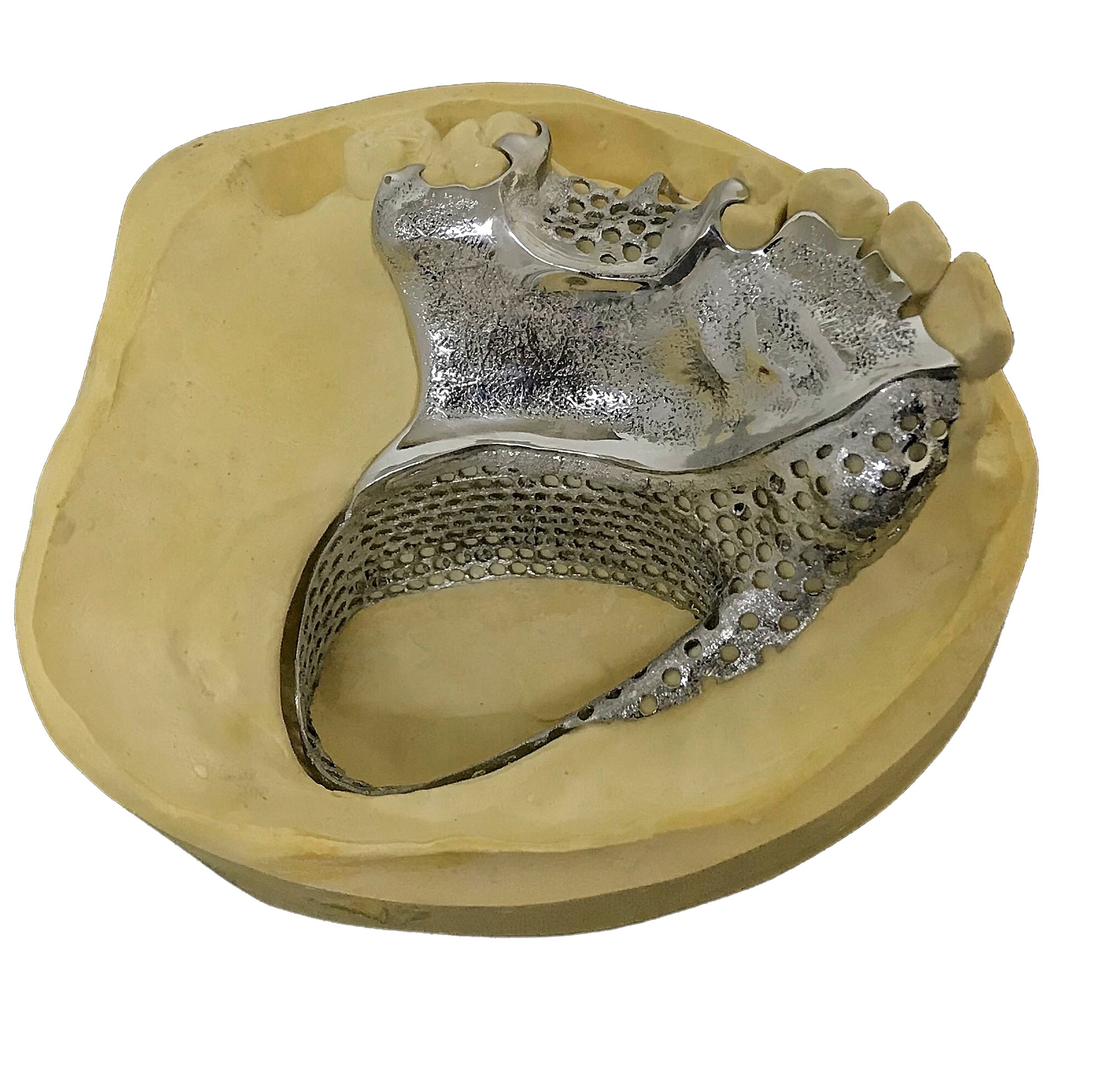
Additive manufacturing (AM) company Renishaw has worked with a UK dental laboratory to help develop a 3D printing process to make improved removable partial dentures (RPD).
Egan Dental Laboratory was using traditional methods to manufacture and design its frameworks by using processes such as the lost wax technique. This manual process took the technicians two hours to complete each cast chrome framework and was prone to error because when casting metal by hand, cobalt chrome material can shrink on cooling. There is also a risk of porosity if the molten metal is overheated, which in turn can also cause the introduction of excessive carbon, which can lead to structural weaknesses, the company said.
Using Renishaw’s AM system, the denture is built using laser powder bed fusion (LPBF) with an ytterbium fiber laser beam focussed onto the powder bed, melting 40-micron layers of cobalt chrome powder until the complete component has been built.
‘The new process takes just 40 minutes of manual work; less than half the time of the casting process,’ said Gill Egan, MD of Egan Dental Laboratory. ‘The dramatic reduction in labour required, means we could double the laboratory’s productivity, as well as providing a cleaner, safer environment for our staff. […] We have developed a process and a product that brings RPDs into the digital revolution and I urge the rest of the dental industry to grab digital technology with both hands.’
‘Around 95% of metal partial dentures are cast,’ said Chris Dimery, sales manager, medical dental products division, Renishaw. ‘This traditional process results in thick, bulky chrome frameworks that are not ideal for the dentist or the patient. Because of this, the industry is searching for alternatives. AM enables metal RPDs to be smaller and more discreet. Additively manufactured chrome frameworks are exactly what the market needs: better for the dentist, patient and dental laboratory.’
This story uses material from Renishaw, with editorial changes made by Materials Today. The views expressed in this article do not necessarily represent those of Elsevier.





